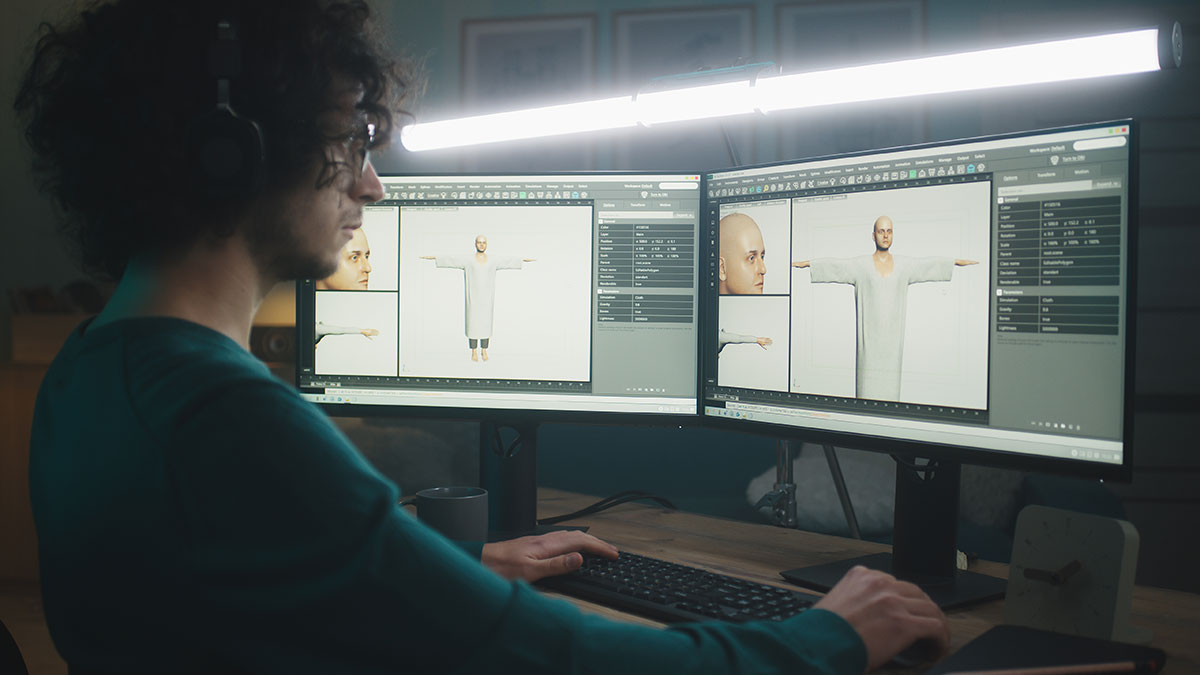Disclaimer: The information on our website is provided for general information purposes only. We make no representations or warranties of any kind, express or implied, about the completeness, accuracy, reliability, suitability or availability with respect to the website or the information contained on our website for any purpose. Any reliance on such information is therefore strictly at your own risk and we are not liable for any damages or losses arising out of or resulting from your reliance on any information contained on our website.
Animators may create characters in video games, graphics for movies, or work with special effects. Additionally, these artists are experts at visual imagery, stimulating movement using electronic tools, and great with a computer computers. You can find animators working in movies, commercials, crime scene recreations, video gaming, and more. Watch this video to learn what an animator does.
How to Become an Animator

A bachelor’s degree in fine arts, computer graphics, animation, or a related field is typically needed to become an animator. It usually takes four years to finish a bachelor’s degree if you are a full-time student. Colleges or universities offer courses focusing on 2D and 3D modeling, computer animation, special and visual effects, advertising, motion graphics, social media, typesetting, and other classes. Certifications in a animation software is helpful also.
A master’s degree is also beneficial to advance your career and become an animation director, effects animator, key animator, or stop motion animator. If you have yet to graduate high school, focus on your technical art skills and try to learn computer programs where you can illustrate or animate. To get started, many programs offer a 30 day free trial and many people provide free tutorials on YouTube.
Gaining Experience as an Animator
Animators must also have a portfolio to prove and showcase work experience and talent. Starting a portfolio while in college is recommended to help find work as soon as possible after graduation. It is essential to continue customizing the portfolio to reflect any freelancing jobs, volunteer work, hands-on experience, and technical skills learned.
Along with a portfolio, you will want to gain as much experience as possible. Animators starting out in their career can look to work through an internship as an entry-level job or apprentice under an experienced animator. The animator can sometimes have the opportunity to shadow professionals at their job and learn more about the industry, make contacts, and get advice.
Continued Education for Animators
An animator needs to continue to develop skills to stay competitive and up-to-date in the latest industry trends by taking continuing education courses, learning new software features or programs, networking with other animators, reading trade magazines, and adding new skills to their portfolio. Animation contests can give also you a baseline idea of how you measure up to other animators in the field. Entering these competitions can improve your technical skills and give you the added confidence of your talent. Don’t forget to add your entry it to your portfolio!
Specific skills needed for a career in animation such as artistic ability, computer skills, and creativity. Animators also need problem-solving, time management, and organizational skills. Animators can join organizations such as the Society for Animation Studies, Society of Illustrators, and Women in Animation. Now let’s look at what an animator does! Keep up the excellent work!
Animator Job Description
If you love art, storytelling through special effects, and visual images, you may love a career as an animator! The type of animation duties you perform will depend on where you work. For instance, you could provide animations for cartoons, movies, commercials, or video games. You may work on website graphics, 2D or 3D animation, become a background artist, or work on character animation. Though these positions each involve different techniques and varying skills, animators still use computer software and artistic skills to get their job done.
Animators create frames and design animated backgrounds, set design characters, and objects. They draw storyboards and create models that look realistic. An animator may use photographs of an actor or subject matter’s movements as well to create animation in a 3D character. Animators often work with creative teams, such as directors, actors, or game designers, specializing in specific areas and adapting to other ideas or changes. They may hand draw or use 2D and 3D art in the animation process. They are conscious of time restrictions and ensure they meet deadlines. a career in animation can be a fascinating and rewarding job for those who love art, animation, and a good story!
Congratulations on reading all about being an animator, but let’s learn what the benefits are. Animators are creative people and love the advantages of personal expression through their work. This job gives them creative expansion and the ability to incorporate art into their life. Animators can often choose the projects they want to work on and may be able to work flexible hours. As they mainly need technology to work, animators may have the opportunity to work from anywhere worldwide as well! They also often work as part of a team with other highly creative, artistically talented individuals.

